Waking Up On the Niobrara
Turning In By Moonlight
I forgot to mention in last night’s post that I finished packing up by moonlight. The campground at Smith Falls so far as I could tell lacked artificial lighting, so my eyes were able to adjust very well. It’s incredible that a 3/4-full moon could light the night up so well, and for the most part we modern humans have no idea how well our eyes adjust to it because of all the artificial light we surround ourselves with. The funny thing about it is that orange or yellow light from a fire doesn’t prevent your eyes adjusting to the moonlight. Had it not been for me sitting there in just firelight, I don’t think I would have realized how bright the moonlight was.
Getting Started
Anyway, I think I may have actually slept reasonably last night. And my mattress stayed inflated all night too! On last year’s trip I realized it was losing air when we camped at Yosemite. I found a tiny little hole on the bottom and patched it up earlier this season. After two weekend camping trips since, I wondered if a leak might still be present because it seemed to still lose air, albeit more slowly. Perhaps that was not the case.
I stirred around 5:30am, about an hour before sunrise. The moon was gone but the sun had alrighty begun to intrude with first light. The entire campground was quiet with the exception of the tranquil flow of the Niobrara River.
Becky awoke around 6:15. We witnessed some brilliant red colors this morning—I should have thought about that saying, “Red sky in morning, roadtripper take warning,” or something like that. We certainly ran into some weather today…but I get ahead of myself.
What’s With the Humidity?
The first weather we noticed last night was the humidity. Smith Falls State Park is just west of the 100th Meridian, which is about where the altitude of the Great Plains increases and in turn the climate becomes more arid. In general, you can grow crops without relying heavily on irrigation east of the 100th Meridian, but not west of it. We’ve noticed in years past that the air is generally much dryer overall than it was tonight. It felt positively clammy well before sunset—more like an Ohio summer.
When we woke up this morning, our tent was soaked from the dew. We’d left the rainfly open last night to get airflow since it was rather warm. I made the mistake of leaving my sandals out in the open and they were terribly wet. Once we bit the bullet and got down to business, we made short work of packing the bedding and tent, leaving the campground around 7:30am.
Real Food For Breakfast!
Our original plan included a full day of stops at a few more places in Nebraska before heading into Wyoming for the night. One of these was Toadstool Geological Park, which sounded wonderful, but required a 13-mile drive down a gravel road. Maybe we’ll try that in the future during a more normal dry year when the road is less likely to be flood damaged like we saw in the campground in Smith Falls State Park.
Since we’d dropped Toadstool, that freed up plenty of time for us to get real food for breakfast! We headed into Valentine and ate a full breakfast at the Bunkhouse Restaurant in the center of town. The service was great, and the food was good diner fare that hit the spot for us.
The Bryan Bridge
After breakfast we headed south of town a mile or two to check out the Bryan Bridge, which used to carry US-20 across the Niobrara River. On the opposite side of the new US-20 bridge sits an old railroad trestle that now carries bicycles instead of trains.
The entire area around Valentine has incredibly beautiful terrain! The hills around town are lovely, and the Niobrara River seems like a wonderfully quiet place to canoe or kayak through them.
Northwest Nebraska
Not far west of Valentine, the terrain becomes less rugged with more rolling hills and fewer trees. The aridity west of the 100th Meridian certainly becomes apparent. We drove about two hours through another handful of very quiet tiny little towns.
As we approached Chadron the terrain changes again. Along with rolling hills, rocky buttes began to impose themselves on the horizon. Chadron was a bit larger than Valentine and even had Walmart. Here we turned south to visit Chadron State Park.
Chadron State Park
The buttes only became bigger and more concentrated as we approached the park. This area reminds me very much of the drive between the Badlands and Black Hills on Highway 44 in South Dakota and Wyoming. We pulled into the park office, paid the $8 out-of-state day-use fee, and headed up the park’s scenic drive.
I wanted to see the Blackhills Scenic Overlook, but the narrow high-crested gravel road made us rethink this. We instead continued on the scenic drive past a picnic shelter with a nice retro playground near the horse pasture. We didn’t stay long here since we hoped to get to our campground for the night a bit earlier than originally planned, and we still had one more stop…
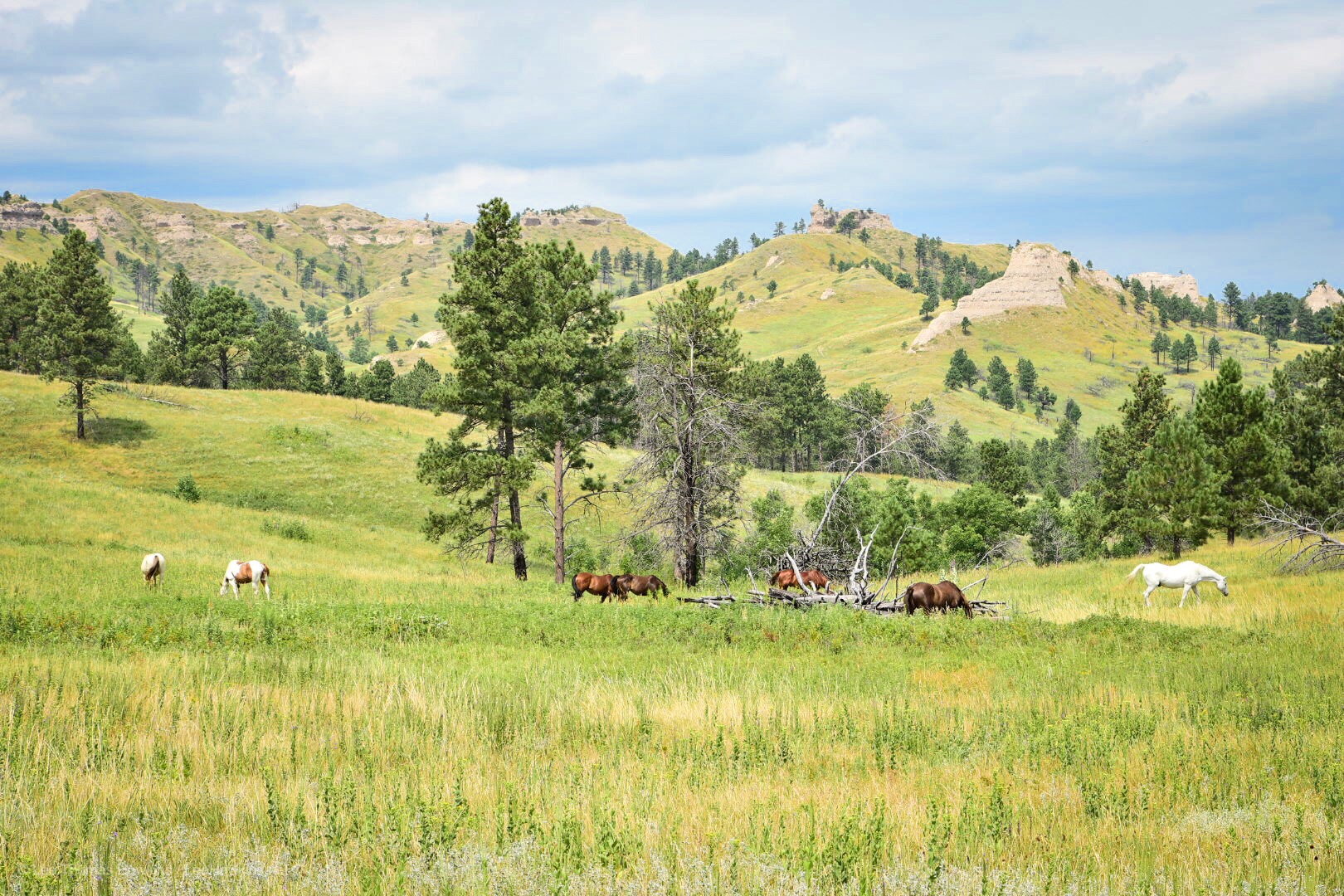
Fort Robinson State Park
After refueling, we arrived at Fort Robinson State Park around 2 o’clock. Fort Robinson as you may have guessed was an old cavalry outpost and the site of some rather grim history with the Cheyenne tribe during the Indian Wars of the late 19th Century. Today it is a sprawling campus of historic buildings converted into museums and guest rooms set against the background of High Plains buttes.
We visited the Trailside Museum, which has a complete Columbian mammoth skeleton to greet you just inside the front door. They also have two male mammoth skulls that were unearthed with tusks intertwined—paleontologists believe they died fighting each other for a female.
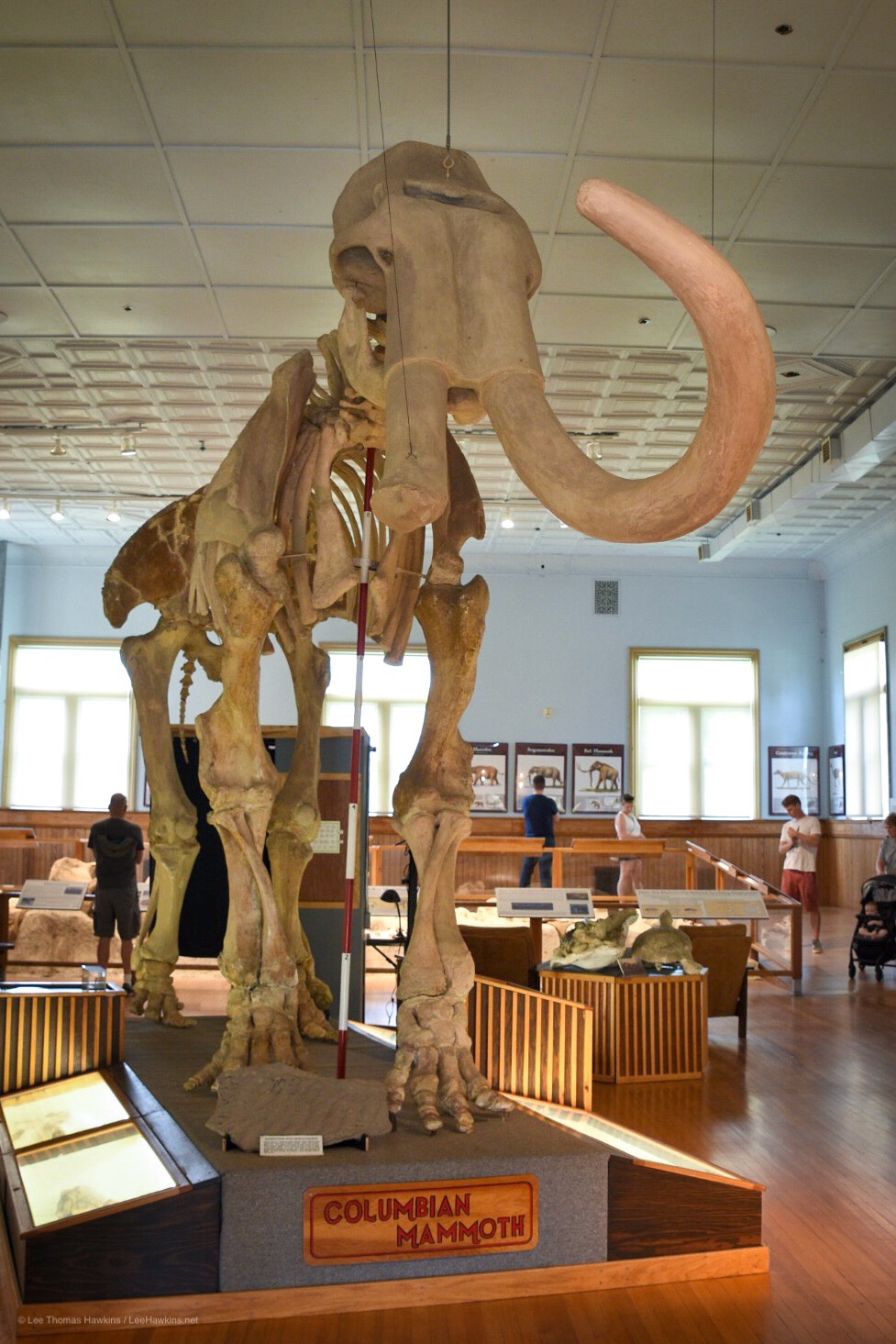
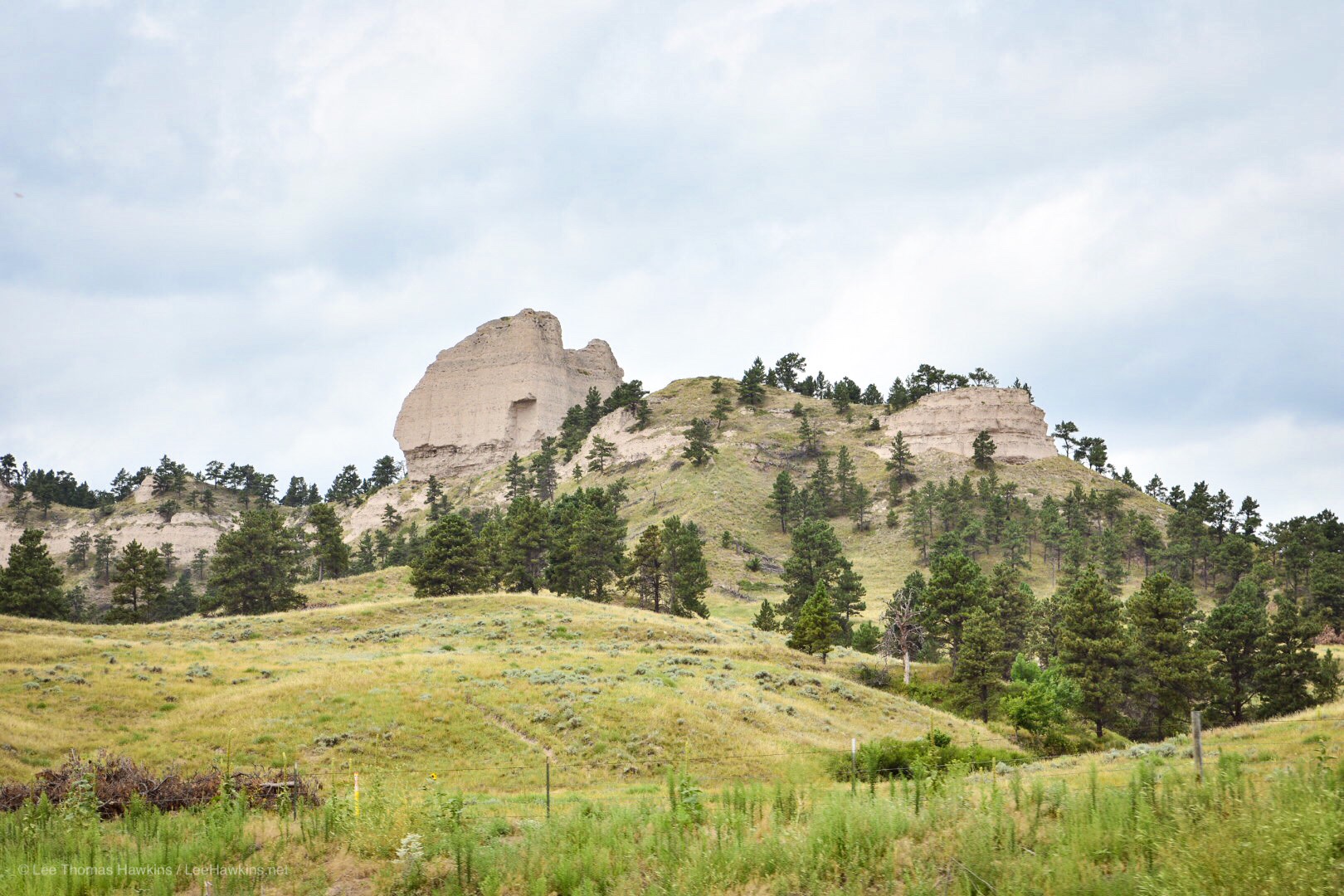
Wyoming
Supercell!
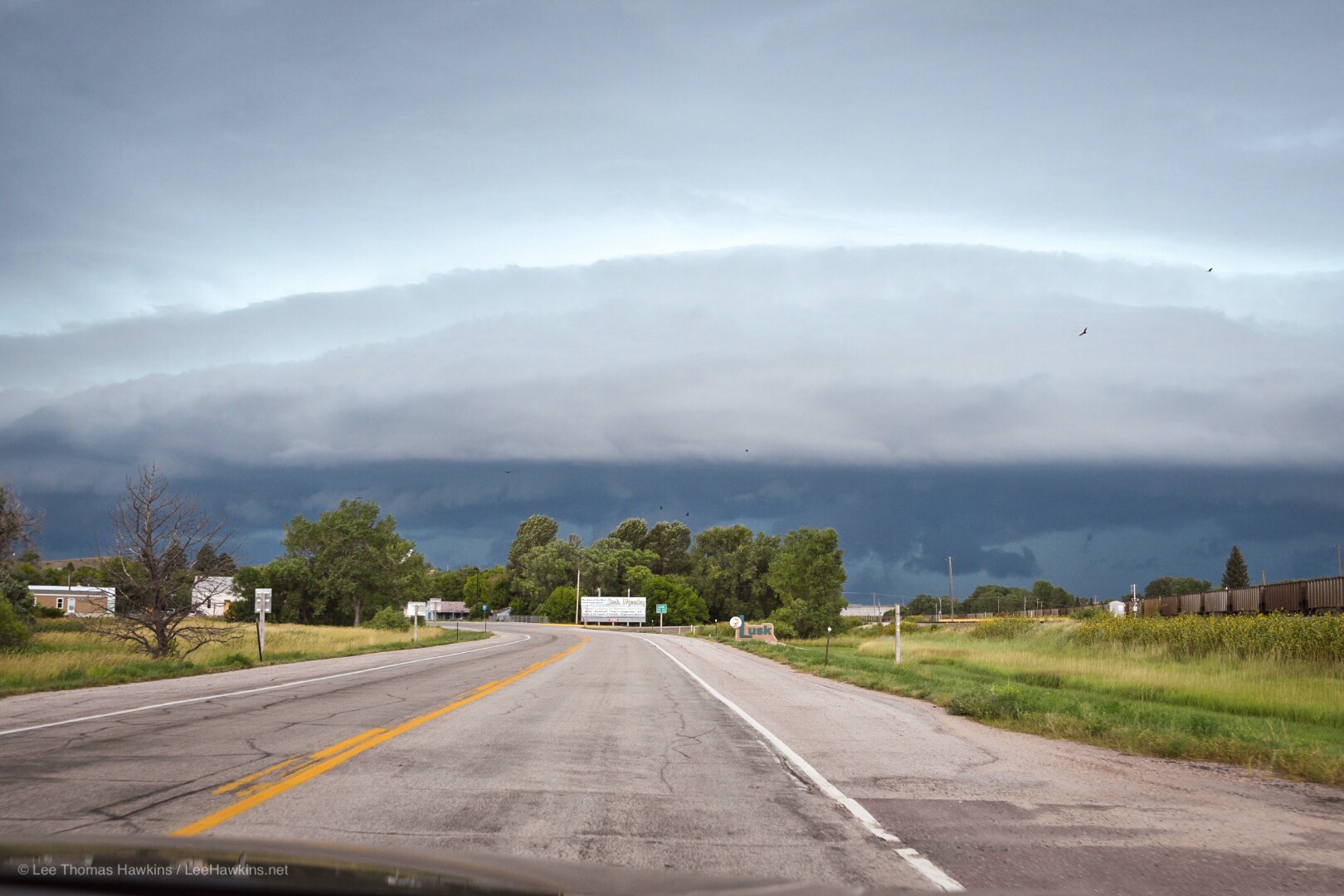
After perusing the campus, we continued west on US-20 into Wyoming for our final stop for the night, Ayres National Bridge Park. What should have been a 2-hour drive got extended by a magnificently huge thunderstorm we went though just past Lusk, Wyoming. Becky could only go 40mph at certain points, the rain fell so hard. Thankfully we had no hail, and we were through the storm well before we hit I-25.
Ayres Natural Bridge Park
We pulled into Ayers Natural Bridge Park at about 5:30 or so. Campsites here are free, but limited to a 3-day stay. There are several picnic shelters, and they’re usually full of people on weekends. The park closes for day use at 8pm, and a gate keeps anyone from getting in until 8am the next morning. There are two riverfront campsites, but those were in use when we arrived, so we took one on the opposite side.
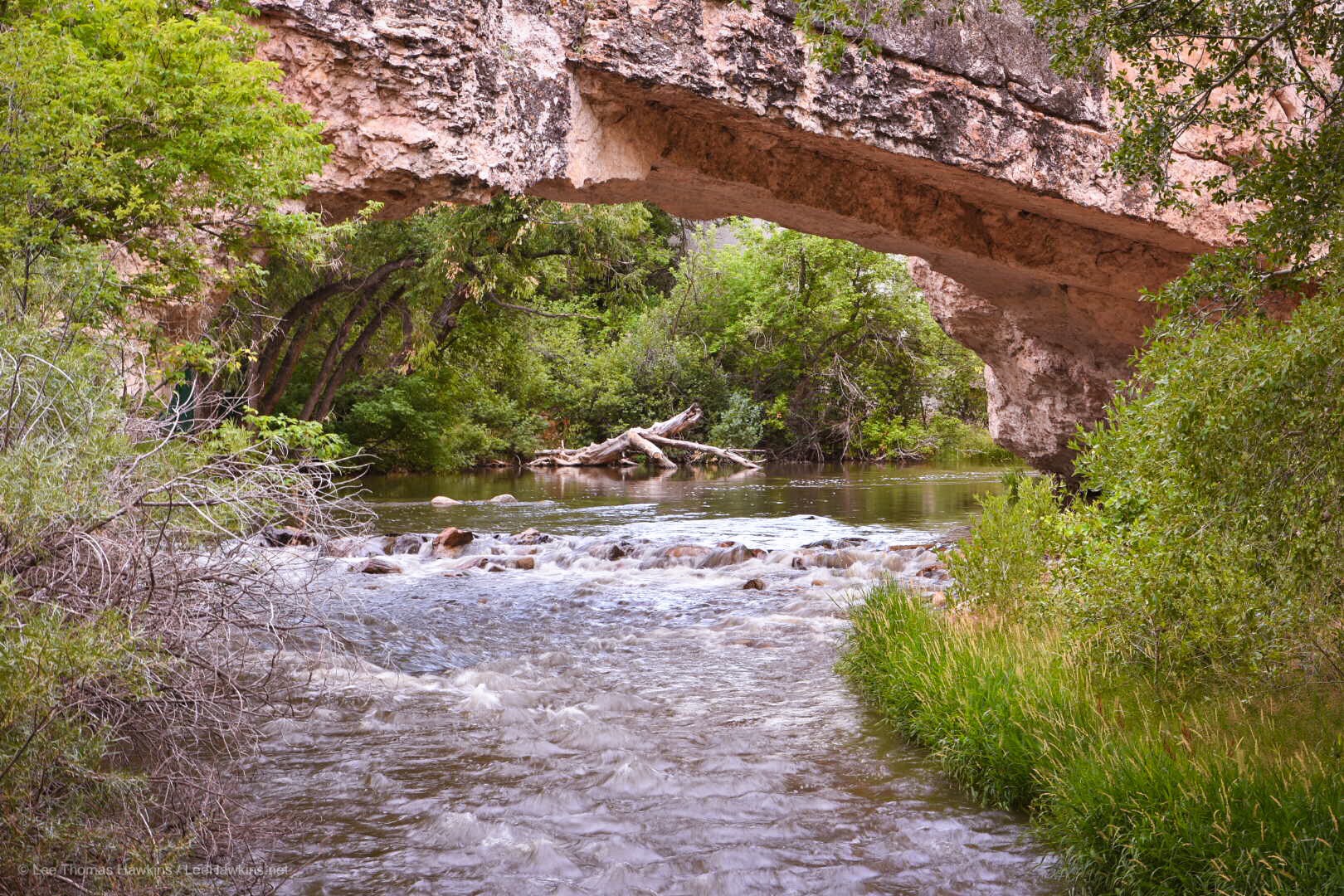
Our campsite came with two logs in the firepit, and I discovered half a box of firewood left behind at another site. This saved us a trip back out to find firewood! And for the second time today, we had a food full meal of grilled hamburgers.
Becky turned in around sunset, while I sat up by the fire until about 9:30 or 10pm. The forecast called for a nice calm night with a pleasant overnight low around 60 degrees. Hopefully we’ll get a good solid night’s sleep before setting out tomorrow for Yellowstone National Park!
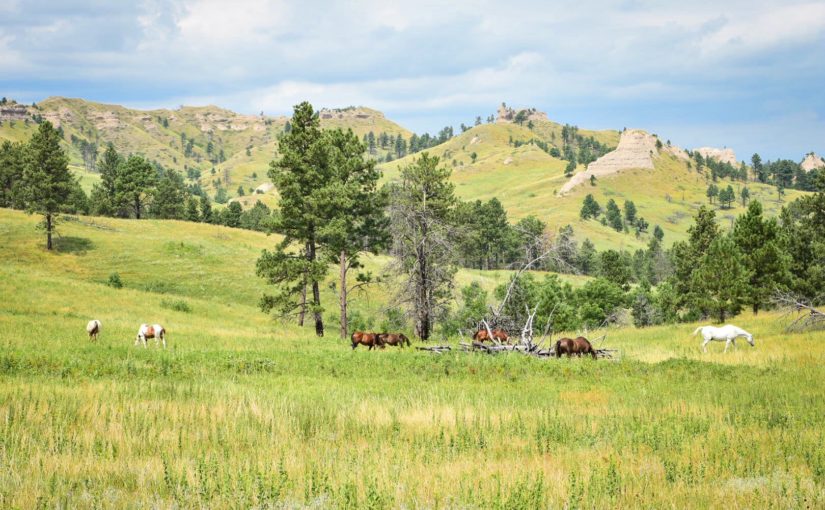
Super Cool! Really enjoy the pictures!!